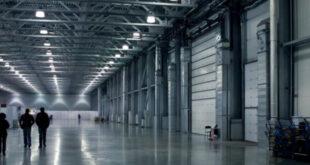Business activity in Riverside and San Bernardino counties fell 26.5 percent during the second quarter of 2020. The third quarter will probably be better, but a quick jobs recovery isn’t expected, according to several experts.
Let’s hope this is as bad as it gets.
After a slight drop in the first three months of 2020 – 0.2 percent – business activity in the Inland Empire dropped 26.5 percent in the second quarter, as the COVID-19 pandemic delivered a hammer-blow to the local economy, according to the UC Riverside School of Business Center for Economic Forecasting and Development.
“The lockdowns and social distancing were in place by April and May, and that’s showing up in the report,” said Adam Fowler, research director at the center and a co-author of the report. “Everyone was told to stay home, and they did.”
The second quarter numbers represent a massive drop in regional employment and consumer spending, according to the 10-page analysis, which was released this month.
The report noted that COVID-19 is hurting some parts of the economy more than others and that the second quarter’s “dismal numbers” were caused mostly by the “rigid closures” mandated by Gov. Gavin Newsom and the state legislature in Sacramento.
It also noted that Riverside and San Bernardino counties are among the top five counties in California for confirmed COVID-19 cases and that some economic sectors will continue to be constrained until the virus is contained.
Now would probably be a good time for another federal relief package along the lines of the $600-a-week the Trump Administration sent out in the spring after the severity of the pandemic became obvious, Fowler said.
No financial relief could keep a recovery from happening, Fowler said.
The national economy is likely to recover on separate tracks: GDP, which will recover quickly, and employment, which will take longer.
“The next quarter’s GDP is expected to be huge, maybe one of the biggest we’ve had,” Fowler said. “So we will see a big increase there, but jobs probably won’t be back to their pre-pandemic levels until late 2021. There are too many industries, like travel and hospitality, that have too much face-to-face contact.”
The report tried to strike one slightly optimistic note, stating that the second-quarter drop “likely will be the worst of the COVID-19 recession,” despite unemployment claims in both counties reaching peak levels early in the quarter.
The report’s overall tone was gloomy: Regional spending and unemployment in Inland Empire “collapsed” in the second quarter, as Riverside and San Bernardino counties became two of the top five counties with the highest number of COVID-19 cases.
Both counties also hit their highest-ever level of filed unemployment claims – 53,500 in Riverside County and 42,100 claims in San Bernardino counties – in the week that ended April 11. Both counties also remain among the top five statewide for new COVID-19 cases and unemployment claims, the report stated.
Taxable sales, described in the report as a “lagging indicator” of business activity and consumer demand, fell 9.5 percent between the fourth quarter of 2019 and the first quarter of 2020. The research center originally predicted a 3.7 percent decline.
“This makes the outlook for the second quarter taxable sales more dire, a perspective supported by local credit and debit card transaction data, which shown that consumer spending fell precipitously in April and has not yet recovered fully,” the report states. “The second quarter of 2020 is likely to be the worst of the current COVID-19 recession, with a renewed surge of cases and mandated closures adding a downside risk to moving ahead.”
Nothing in the second quarter report is surprising, according to one economist familiar with the Inland Empire economy.
“Those numbers don’t surprise me, because they’re pretty similar to what’s happening nationally, and that’s usually the case with the Inland Empire,” said Robert Kleinhenz, a Long Beach-based economics consultant. “The GDP dropped about 30 percent during the second quarter.”
The Inland region’s warehouse-distribution sector has received a boost from COVID-19, which has increased online shopping. That has meant more activity at logistics operations in the Inland region.
“That’s actually helping the [Inland] economy a little bit,” Kleinhenz said.
Currently, there are approximately seven million confirmed cases of Coronavirus in the United States, and some virus experts – notably Dr. Anthony Fauci, the Trump Administration’s chief advisor on COVID-19 – have warned about a possible second wave this fall.
Should that happen, the damage to the economy, both locally and nationally, probably wouldn’t be a severe as the first wave, said Jay Prag, professor of economics at the Drucker School of Management at Claremont Graduate University.
“I think most businesses have adjusted to the pandemic and have mitigated it to some extent,” Prag said. “We have social distancing and everyone is wearing masks, and that will have to do until we get a vaccine. But in the meantime, I won’t be taking my daughter to a movie theater.”
 IE Business Daily Business news for the Inland Empire.
IE Business Daily Business news for the Inland Empire.

